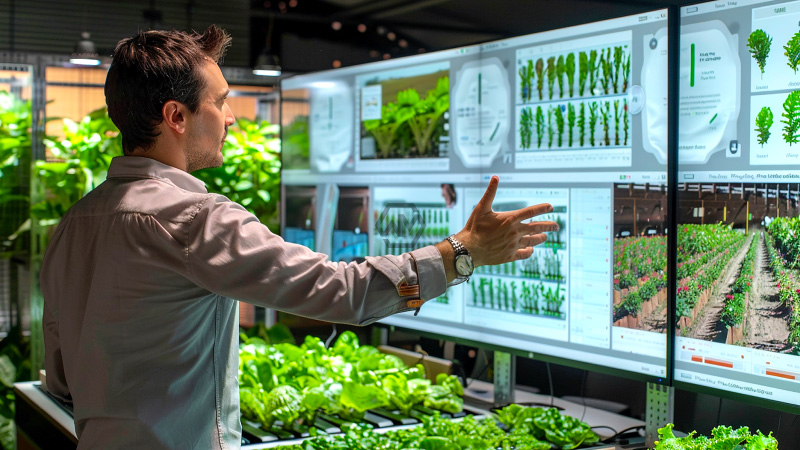- Vertical Farming: Fischer Farms is Europe’s largest vertical farm, allowing high-density crop production near urban centers.
- Eurostat’s Census: The 2020 agricultural census reveals that 64% of EU farms are small (under 5 hectares), and only 6% of farm managers are under 35.
- Sustainability Focus: Vertical farming reduces carbon footprint by growing food close to where it is consumed, transforming urban farming.
Vertical Farming Innovation: At Fischer Farms, Europe’s largest vertical farm, technology takes center stage. Crops such as salads and peas are grown indoors in stacked layers, creating an environment that can thrive regardless of the outdoor climate.
Insights from Eurostat’s Agricultural Census: Eurostat’s 2020 agricultural census provides in-depth data about farming in the EU. With 9.1 million farms across the continent, 64% of them are small-scale (less than 5 hectares), and only 6% are managed by individuals under 35.
Revolutionizing Agriculture: How Vertical Farming and EU Data Are Shaping the Future
The Rise of Vertical Farming: Vertical farming is increasingly seen as the future of sustainable agriculture, especially in urban areas. Fischer Farms, the largest vertical farm in Europe, grows crops like lettuce and peas in stacked layers inside climate-controlled warehouses. This allows for efficient crop production without relying on outdoor weather conditions, reducing food transportation distances and minimizing environmental impact.
Sustainability and Efficiency: One of the key benefits of vertical farming is its resource efficiency. Compared to traditional agriculture, vertical farming requires significantly less land and water, making it an ideal solution for areas with limited space. It also reduces the carbon footprint associated with transporting food over long distances, contributing to more sustainable food systems.
Eurostat’s Agricultural Data: The 2020 agricultural census conducted by Eurostat offers a snapshot of farming in Europe. It reveals that the majority of farms in the EU are small-scale operations, with over half being under 5 hectares. Additionally, the aging farm management workforce, with only 6% under the age of 35, presents a challenge to the sector’s future.
Opportunities for Innovation: While many EU farms are small and have an aging workforce, the data suggests room for innovation. The growing interest in vertical farming technologies and automation could provide opportunities to modernize these smaller farms. Eurostat’s findings highlight the need for investment in the future of farming, particularly in urban areas where space and resources are at a premium.
The future of farming in Europe is likely to be shaped by innovative solutions like vertical farming, alongside efforts to modernize small-scale farms and engage younger generations in agriculture.
“The future of farming lies in the combination of innovation, sustainability, and urban agriculture.”



